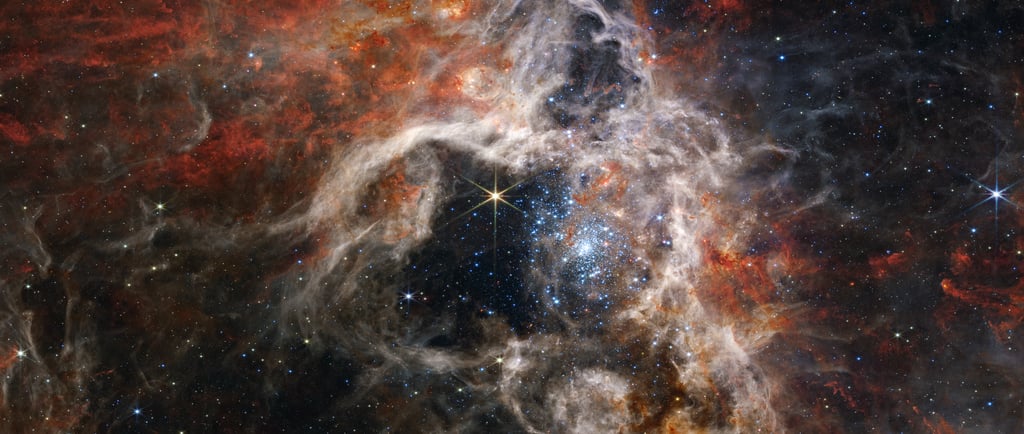In The Tarantula Nebula: A Glimpse into Stellar Formation


Introduction to the Tarantula Nebula
At a staggering distance of 161,000 light-years from Earth, the Tarantula Nebula stands as a beacon of cosmic beauty and scientific intrigue. Located in the Large Magellanic Cloud galaxy, it is not only the largest but also the brightest star-forming region within our local group of galaxies, which includes our very own Milky Way. This magnificent nebula has captivated astronomers and stargazers alike due to its unique characteristics and the incredible celestial phenomena happening within its boundaries.
Characteristics of the Tarantula Nebula
The Tarantula Nebula is renowned for hosting the hottest and most massive stars known to date. These stars, often many times larger than our sun, undergo rapid fusion processes, resulting in the emission of immense amounts of energy. This energy contributes to the luminosity of the nebula, making it a prominent feature in our night sky. The Tarantula Nebula was initially discovered in the 18th century and has since been the subject of extensive research, allowing scientists to gather vital data on stellar evolution and cosmic formation.
The Importance of Studying the Tarantula Nebula
Understanding the dynamics of the Tarantula Nebula is crucial for multiple reasons. Firstly, it provides insights into the processes of star formation and the lifecycle of stars. By studying this region, astronomers can observe how massive stars are born, evolve, and ultimately die, contributing to the galactic ecosystem. Furthermore, the study of the Tarantula Nebula enhances our knowledge of chemical enrichment in galaxies, as the explosive deaths of these massive stars generate heavy elements essential for the formation of planets and life as we know it.
The Tarantula Nebula also serves as a testing ground for various astronomical theories. Its spectacular stellar formations challenge existing models and promote advancements in our understanding of cosmology. As researchers continue to analyze data collected from the nebula, we can expect new discoveries that may redefine our perceptions of the universe.
In conclusion, the Tarantula Nebula, with its awe-inspiring scale and vibrant stellar population, presents a unique opportunity for astronomical research and discovery. Its distance of 161,000 light-years may separate it from us physically, but its significance in the realm of astrophysics brings it metaphorically closer. Continuing to explore this remarkable nebula allows us not only to uncover the secrets of our galaxy but also to enhance our appreciation for the grandeur of the universe.
